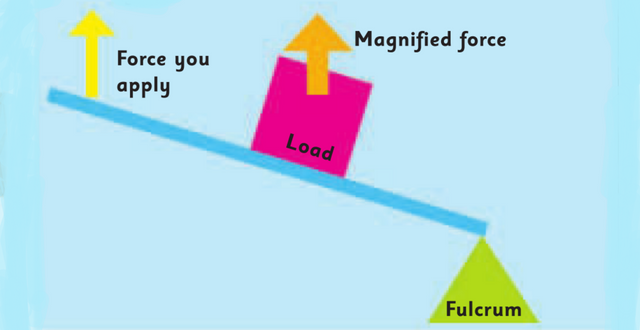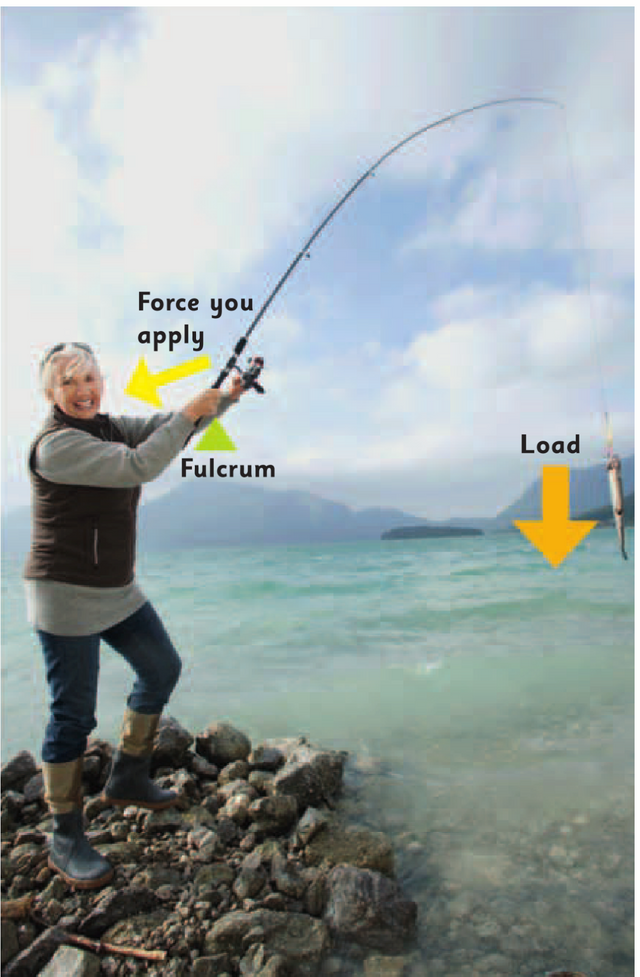First, what is a machine??.
A machine is any device that does work. Machines make our lives easier because they reduce the amount of energy, power, and time we need to get one thing done by magnifying our input force.
A machine can increase the magnitude or the distance of a force but not both at the same time.
Interestingly we practically use machines in our everyday activities, from the toothbrush you use in cleaning your teeth, the spoon you use in eating, even the small piece of toothpick used in picking your teeth. Imagine hitting a nail into wood with your bare hands, it seems impossible but much easier with a little piece of hammer. All these are referred to as simple machines. Yes you could say because of the way they appear and because they have fee moving parts

[Image shot from my school science laboratory]
Machines come in many sizes, shapes and forms. Some machines are very simple in its makeup and use whilst others are very complex. Also note that the complex machines has its origin from the simple machines.
There are six types of simple machines — the inclined plane, the wedge, the screw, the lever, the wheel and axle, and the pulley. These six have very specific features and do unique jobs, even though some may work in similar ways. In fact, some simple machines may be a combination of simple machines.
Features of a simple machine
- they do not use electricity
- they have one or fewer moving parts
- they give us mechanical advantage
- even though they make work easier, for us they still need input (force or effort) from a person
- they make tough jobs easier by changing the force, direction or speed of a movement
Levers moves loads
A lever is a simple machine consisting of a beam or rigid rod pivoted at a fixed hinge or fulcrum . A lever is a rigid body capable of rotating on a point on itself. examples of levers include the seesaw, crowbar, fishing-line, oars, wheelbarrows and the garden shovel.
parts of a lever

Levers have four very important parts — the bar or beam, the fulcrum (the pivot or the turning point), effort (or force) and the load.
The beam is simply a long plank. It may be wood, metal or any durable material. The beam rests on a fulcrum (a point on the bar creating a pivot).
When you push down one end of a lever, you apply a force (input) to it. The lever pivots on the fulcrum, and produces an output (lift a load) by exerting an output force on the load. A lever makes work easier by both increasing your input force and changing the direction of your input force.
The three classes of Lever
The parts of the lever are not always in the same arrangement. The load, fulcrum, and effort may be at different places on the plank.
Class 1 lever

In class one lever, the fulcrum is in the middle, the force you apply at one end is magnified at the other end
Class 2 lever

In class two lever, the fulcrum is at one end, and your hand apply a force at the other end. This creates a magnified force in the middle
Class 3 lever

Class three levers reduce the force you apply. They are used in tweezers and other tools that pickup small delicate objects
Life applications of the different classes of levers
Class one

A pair of scissors is made of class one levers. You apply force with your fingers and this force is magnified at the blades, giving them power they need to cut through paper or other materials.
Class two

[Image Shot from my school science laboratory]
Your arms and legs are levers, when you stand on tiptoes, your lower legs works as a class two lever. The powerful calf muscle pulls up your heels, lifting your body weight( the load) while your toes form the fulcrum
Class three

[Image Shot from my school science laboratory]
When using a fishing rod to cast a line, the rod works as a class three lever. Your hands applies a powerful force near the base of the rod to create a smaller force at the tip of the rod. Although the force is weaker, the tip moves more farther and faster than your hands, magnifying the speed.
Thanks for stopping by, more to follow on the six types of simple machines in subsequent posts
Remembered this famous quote from Archimedes.
Give me a lever and a place to stand and I will move the earth.
Thank you for the post.
Downvoting a post can decrease pending rewards and make it less visible. Common reasons:
Submit
Thats true @ bikkichhantyal. With a lever the so called difficult task are made easy
Downvoting a post can decrease pending rewards and make it less visible. Common reasons:
Submit